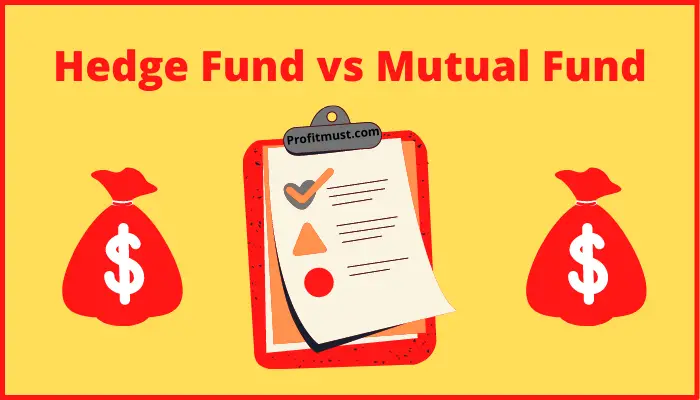People put their money into mutual funds in order to get a good return. You should be aware of the fund’s performance history and the risk element to get the best returns. The ratios that measure the risk and rewards of an investment are Alpha, beta mutual fund meaning, Standard Deviation, Sharpe Ratio, and others. So let’s discuss what is beta in Mutual Funds and other related terms.
Table of Contents
What is Beta in Mutual Fund?
The volatility of a mutual fund plan in relation to its market benchmark is known as Beta. If a plan’s beta is greater than one, it is more unstable than its benchmark. The plan is less unstable than the benchmark if beta is less than one.
If a scheme outperforms its benchmark, look into whether the scheme’s beta was high or whether the fund manager was able to provide higher risk mitigated returns.
The volatility and price movement of the fund are predicted by beta. It analyzes the risk of an investment and assists investors in judging a fund’s achievement based on the risk factor.

Beta Ratio in Mutual Funds Example
If you invest in a mutual fund with a beta of 1.5, the market will gain by 20%. In this situation, you will receive a 25% return on your investment. However, if the stock market falls 20%, the fund’s value could decline by 25%.
The market’s beta is 1.0, and the Beta ratio in mutual funds illustrates how a fund might react to market changes. A fund’s beta is more than 1.0, indicating that it is more volatile than the sector.
A beta below 1.0, on the other hand, indicates that the investment is less risky than the market. If the beta in mutual funds is 1.0, investment is as uncertain as the sector.
Note:
When participating in a mutual fund, the beta ratio can assist you determine how significant the risk is. It could assist you in making smarter investment decisions.
Other Related Terms to Beta in Mutual Funds
With beta in mutual funds some other terms are also important like Alpha, Standard Deviation, Sharpe Ratio and R-squared. Let’s discuss them as well
Alpha
The risk-adjusted return of your investment is measured by alpha. Simply said, it will inform you of the potential excess returns that your deposited fund could earn when compared to its benchmark. If a mutual fund scheme has an alpha of 5.0, it has typically surpassed its benchmark index by 5%.
It can be thought of as the additional value that a mutual fund management contributes to or subtracts from your portfolio’s performance. Alpha can be either positive or negative.
Example
Assume you invest in the Abc mutual fund, which uses the BSE Sensex as its benchmark. Let’s also assume that the BSE Sensex has generated a 20 percent return in a particular year.
If alpha is positive 2.0, it signifies that Abc surpassed its benchmark index by 2% and had a return of 22% for that year. A negative alpha of 2.0, on the other hand, could indicate that Abc has missed the BSE Sensex, with returns of 18 percent for the year.

Standard Deviation
The standard deviation is an analytical measure that determines how far data deviates from the mean or average. When applied to mutual funds, it indicates how far your portfolio’s return deviates from the predicted return based on the fund’s previous performance.
Example
For instance, if the portfolio Abc has a standard deviation of 7% and an overall return of 15%, it suggests that it has a probability to deviate by 7% from its projected average return and might yield returns ranging from 8% to 22%.
The standard deviation of a portfolio is proportional to its fluctuation. Sharpe’s Ratio is also calculated with it.
Sharpe Ratio
Standard Deviation is used to calculate the Sharpe’s ratio, which measures a mutual fund’s risk adjusted returns. It will tell you how effectively your mutual fund portfolio has outperformed the risk-free rate of return (if you had alternatively invested in government securities, which are nearly risk-free).
This effectively tells you if your gains are the result of wise investment choices or excessive risk. The stronger the Sharpe’s ratio, the greater your mutual fund portfolio’s risk adjusted return.
R-Squared
R-Squared is a mutual fund analytics tool. It can be used to see how closely a mutual fund’s performance matches that of a benchmark index. Keep in mind that R-squared does not reflect the fund’s performance. R-squared does not indicate whether or not a mutual fund is a suitable investment. It basically evaluates the results to those of a particular benchmark.

Conclusion
To discover the perfect mutual fund plans for your portfolio and risk profile, combine the conclusions from the above methods of risk measurement with details such as fund history, past performance, and fee ratio.
This is all from our side regarding beta in mutual funds. Although, if you have any doubts about beta mutual fund meaning, you can just comment below and to open account with groww click here
Other Interesting blogs related to beta ratio in mutual funds:
SIP Investment is Good or Bad?
Mutual Funds in Demat Account Pros and Cons
How to Invest in Mutual Funds without Demat Account
FAQ About beta in mutual fund
Beta formula in mutual fund?
The correlation of an asset's return with the return of the benchmark, divided by the volatility of the benchmark's return over a specific duration, is the formula for evaluating beta.
What is standard deviation in mutual fund?
The standard deviation is an analytical technique that evaluates how far data deviates from the mean or average. When applied to mutual funds, it indicates how far your portfolio's return deviates from the predicted return based on the fund's previous performance.
What is Sharpe ratio in mutual fund?
Sharpe ratio is used to analyse the risk-adjusted returns of a mutual fund. This ratio essentially informs an investor how much more money he will make if he holds a risky investment.
Sortino ratio formula
Sortino ratio = (R) – Rf /SD
Sortino ratio in mutual fund
The Sortino Ratio calculates a scheme's risk-adjusted returns. This is a good ratio for conservative retail investors. In simple terms, the sortino ratio shows how well a scheme's fund manager has been able to limit a scheme's downside volatility — its returns dropping below average — while still producing encouraging results.

